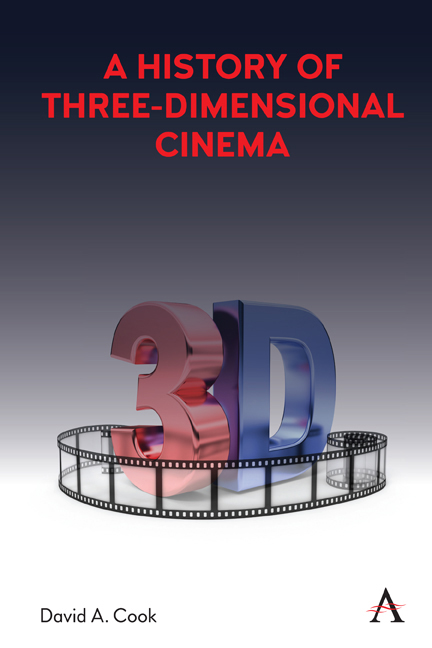Book contents
- Frontmatter
- Dedication
- Content
- List of Figures
- Acknowledgements
- Prefatory Note/Introduction
- 1 “A New Way to Simulate Presence”: The Foundations of Stereoscopic Entertainment, 1427–1888
- 2 “A Very Vivid Impression of Movement”: Early 3D Cinema, 1895–1952
- 3 “See It in 3 Dimension!”: The First Hollywood 3D Boom, 1952–55
- 4 Stereoscopic Revival, 1970–85
- 5 The Age of IMAX, or the “Immersive Cinema,” 1986–2009
- 6 The Blockbuster Years: Digital 3D, 2010–20
- 7 “A Different Kind of Mental Image”: Some Aesthetic Considerations about 3D
- 8 “Experience on Demand”: Virtual Reality
- 9 Conclusion
- 3D Discography: Discs Viewed or Sampled in Preparation for This Book
- Selected Bibliography
- Index
Prefatory Note/Introduction
Published online by Cambridge University Press: 22 October 2021
- Frontmatter
- Dedication
- Content
- List of Figures
- Acknowledgements
- Prefatory Note/Introduction
- 1 “A New Way to Simulate Presence”: The Foundations of Stereoscopic Entertainment, 1427–1888
- 2 “A Very Vivid Impression of Movement”: Early 3D Cinema, 1895–1952
- 3 “See It in 3 Dimension!”: The First Hollywood 3D Boom, 1952–55
- 4 Stereoscopic Revival, 1970–85
- 5 The Age of IMAX, or the “Immersive Cinema,” 1986–2009
- 6 The Blockbuster Years: Digital 3D, 2010–20
- 7 “A Different Kind of Mental Image”: Some Aesthetic Considerations about 3D
- 8 “Experience on Demand”: Virtual Reality
- 9 Conclusion
- 3D Discography: Discs Viewed or Sampled in Preparation for This Book
- Selected Bibliography
- Index
Summary
Most of the three-dimensional (3D) cinema discussed or mentioned in this book originated in the United States and Europe, with some nods to work done in China, India, and Japan. Many other countries experimented with stereoscopic motion pictures in the early 1950s (e.g., Hungary, the Soviet Union, West Germany, Italy, and Mexico), but each produced only a few films in the process and experienced nothing like the 1952–55 boomlet in Hollywood. In the post-Avatar period, 2010–20, digital 3D movies were widely popular and produced by many non-Western industries, but only a handful of such films appeared outside of their domestic markets either in theaters or on 3D Bluray discs. When the COVID-19 pandemic of 2020–21 ravaged the world's film industries, stereoscopic films nearly disappeared altogether because they could not be viably exploited in either theaters, due to the possibility of viral infection, or homes, due to the scarcity of 3D-capable televisions since 2016. The omission of non-Western cinema cultures from this study is therefore due to a lack of accessibility rather than critical choice.
- Type
- Chapter
- Information
- A History of Three-Dimensional Cinema , pp. xiii - xivPublisher: Anthem PressPrint publication year: 2021

